Mastering Your iPhone Home Screen for Task Management
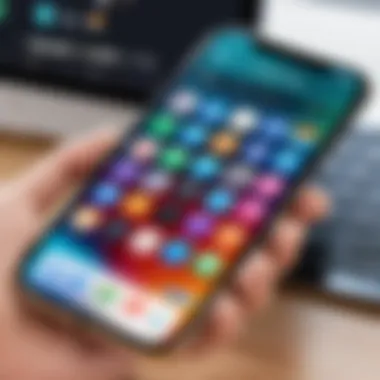
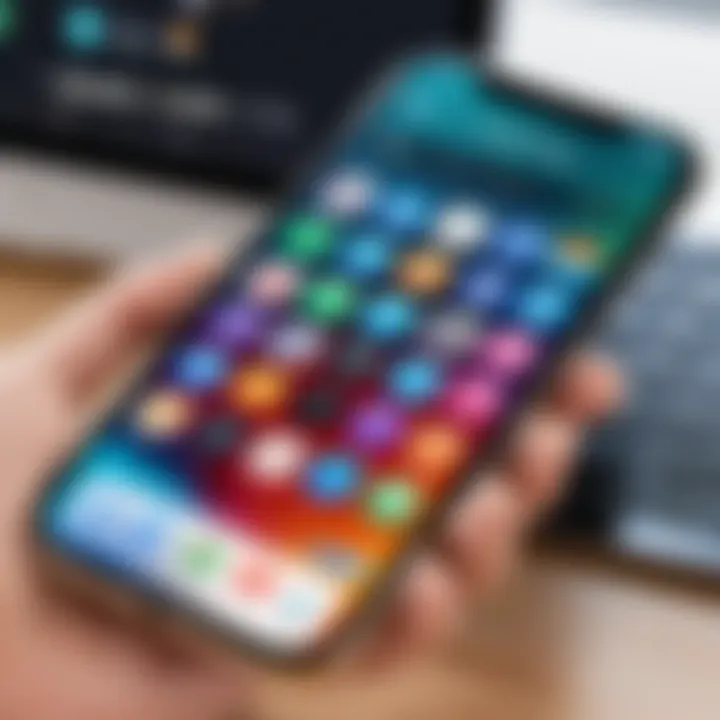
Intro
In an age where efficiency is prized, digital task management systems have transformed the way we organize our daily lives. For iPhone users, the home screen serves as a critical interface between the user and their productivity tools. Understanding how to optimize this space is essential for maximizing productivity.
This guide will delve deep into various strategies for integrating to-do lists into your iPhone home screen. We will explore different applications available for task management and provide practical tips to customize your interface.
The utility of a well-structured home screen cannot be underestimated. By having your tasks readily accessible, you empower yourself to maintain focus and structure throughout your day. Let’s start by examining the technology that makes this optimization possible.
Understanding the Importance of Task Management on Mobile Devices
In today’s fast-paced world, effective task management is crucial for personal and professional success. Managing tasks on mobile devices, particularly iPhones, has become an essential part of daily life. Mobile task management enables users to keep their commitments at their fingertips, enhancing both productivity and efficiency. When well-organized, task management systems can significantly decrease feelings of overwhelm and increase focused effort toward specific goals.
The Role of To-Do Lists in Daily Productivity
To-do lists serve as a powerful tool for organizing tasks. They provide a clear outline of what requires attention each day, allowing users to prioritize effectively. The act of writing down tasks itself reinforces memory and accountability. Additionally, checking off completed tasks provides a sense of accomplishment that can motivate individuals to continue working.
A well-structured to-do list can transform an overwhelming list of responsibilities into manageable steps. It allows users to categorize tasks by urgency and importance, ensuring that higher-priority items are addressed promptly. This method fosters not only productivity but also enhances clarity in one's day-to-day operations.
Advantages of Digital versus Traditional Lists
While traditional paper lists have their merit, digital to-do lists offer distinct advantages that can facilitate better task management. Some notable benefits include:
- Accessibility: Digital lists can be accessed from anywhere, as long as the user has their device. This allows for adjustments in real-time, whether in the office or on the go.
- Integration: Many task management apps synchronize with calendars and reminders, providing a holistic view of commitments. This integration enhances scheduling efficiency and reduces the likelihood of overlap in tasks.
- Reminders and Notifications: Digital applications can send alerts for upcoming deadlines or tasks. This ensures that important activities are not forgotten amidst busy schedules.
- Collaboration Features: Many modern apps allow for sharing lists and coordinating tasks with team members, which is particularly valuable in professional settings.
- Environmentally Friendly: Choosing a digital option reduces the need for paper, aligning with sustainable practices.
In summary, optimizing task management through iPhones can significantly improve productivity. By embracing both the simplicity of to-do lists and the advantages provided by digital tools, users can navigate their responsibilities more effectively.
Overview of iPhone Functionality
Understanding the iPhone's functionality is crucial for users aiming to optimize their home screen for effective task management. The device is engineered with features that facilitate organization, streamline workflow, and enhance productivity. Mobile devices, particularly the iPhone, play a vital role in daily life, serving as tools not only for communication but also for managing tasks. By mastering the functionality of the iPhone, users can harness its capabilities to ensure that task management becomes a seamless part of their daily routine.
Key Features of iOS for Task Management
iOS offers several key features that enhance task management on the iPhone, making it simpler and more intuitive. Here are some notable functionalities:
- Widgets: Widgets offer at-a-glance information. Users can place to-do list widgets on their home screen to view tasks without needing to open an app. This saves time and provides constant visibility to priorities.
- Siri Integration: The voice assistant helps users add tasks quickly. With simple voice commands, users can create reminders or to-do entries, making task management hands-free.
- Reminders App: The built-in Reminders app allows for comprehensive task organization. It supports scheduled reminders and the ability to create lists categorized by behavior or topic.
- Notification Center: Task notifications can be centralized, ensuring that all tasks are visible. This reduces the risk of overlooking important reminders, keeping users accountable and focused.
These features are designed to work cohesively, making iOS a powerful tool for managing daily tasks more effectively.
Customization Options Available on iPhone
Customization is a significant element of iPhone functionality. It allows users to tailor their devices according to personal preferences and task management needs. Here are some of the customization options available:
- Home Screen Layout: Users can adjust the arrangement of apps and widgets to optimize their workflow. Placing productivity apps and task lists in easy-to-reach areas aids efficiency.
- Widgets: Different sizes and types of widgets allow users to choose how much information is displayed. Users can decide between larger widgets that showcase multiple tasks or smaller ones for minimal data.
- Themes and Colors: Personalizing the aesthetic of home screens with colors can also help in organizing tasks. By color coding tasks, users can categorize them such as personal or professional.
Customization enhances the user experience, making it easier for individuals to manage their priorities effectively.
Customizing your iPhone home screen is not just about aesthetics; it significantly improves the functional aspect of managing to-do lists.
By effectively understanding the functionality of iOS and the available customization options, users can optimize their to-do lists on the iPhone. The focus on these elements promotes an organized digital environment, aligning with the goal of improved productivity.
Choosing the Right To-Do List Application
Selecting a suitable to-do list application is a crucial step for anyone looking to enhance productivity on their iPhone. A well-chosen app can streamline task management, making it easier to prioritize responsibilities and track progress. Each application offers distinct features, and understanding these can help users find the right match for their personal and professional needs.
In a rapidly evolving digital landscape, users must consider compatibility with their daily routines and other tools they utilize. Elements such as user interface design, integration with other platforms, and unique functionalities can elevate user experience.
Popular To-Do List Apps Reviewed
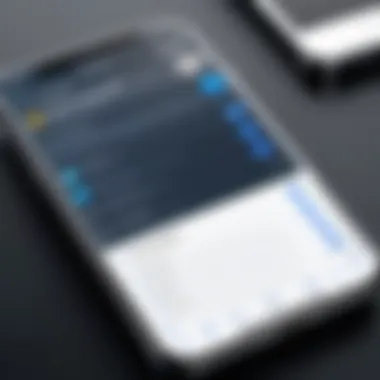
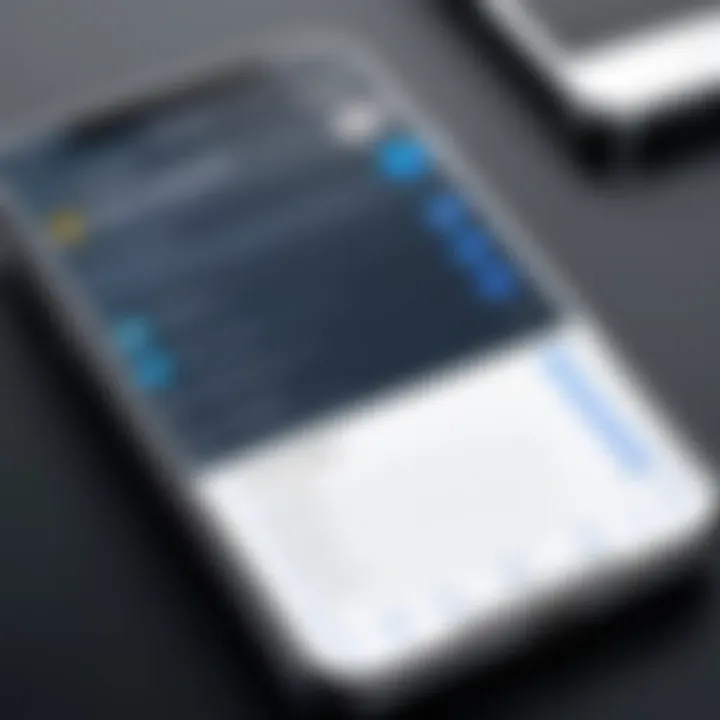
Todoist
Todoist is recognized for its elegant interface and robust functionality. Its collaborative feature allows users to share projects with others, making it ideal for both personal and team usages. What differentiates Todoist is its task hierarchy system. Users can create sub-tasks and utilize labels and filters for better organization. This flexibility makes it a beneficial choice for individuals who manage complex projects. However, some users might find its premium features, like reminders and productivity tracking, a bit limiting without a subscription.
Microsoft To Do
Microsoft To Do integrates seamlessly with the Microsoft ecosystem, appealing particularly to users who rely on other Microsoft applications. It allows users to create lists, set reminders, and even share tasks with colleagues. One of its key characteristics is personalization; users can customize backgrounds and themes. Additionally, its My Day feature helps focus efforts daily. Nonetheless, users can find it less feature-rich compared to competitors, particularly in terms of advanced project management tools.
Apple Reminders
Being a built-in feature on iPhones, Apple Reminders is user-friendly and offers convenience. Users can easily integrate it with Siri for voice entries. This key characteristic makes it an attractive option for those embedded in the Apple ecosystem. The app allows task grouping into lists and the setting of time, location, and priority reminders. Yet, its simplicity may not meet the needs of users who prefer more complex task management functionalities.
Trello
Trello takes a different approach, utilizing boards and cards to manage tasks visually. Its key characteristic lies in its flexibility; it's especially beneficial for project-based tasks and teamwork. Users can easily categorize tasks and add details with checklists and attachments. Trello is popular for teams in creative and project management settings. However, its reliance on a visual layout might not suit everyone, particularly those looking for a straightforward list format.
Criteria for Application Selection
When selecting the right to-do list application, the following criteria should be considered:
- Ease of Use: The interface should be intuitive, allowing for quick task entry and management.
- Features: Assess the functionalities that align with personal workflow, such as recurring tasks or collaboration options.
- Integration: Consider how well the app fits into existing tools and services you use.
- Cost: Determine if the app's pricing structure aligns with your budget, factoring in both free and premium options.
- Customization: Look for options to tailor the app to your needs, like themes or structures that fit your task management style.
Steps to Add a To-Do List to Your Home Screen
Adding a to-do list to your iPhone home screen is essential for efficient task management. Mobile devices are not only communication tools but also platforms for enhancing productivity. A visible to-do list ensures that tasks are front of mind. When tasks are literally at your fingertips, you are less likely to forget them. This integration allows for quick updates, instant access, and better organization throughout your day.
Creating a Widget for Your To-Do List
Creating a widget for your to-do list on the iPhone is quite straightforward. First, ensure that you have a compatible task management app installed. Many apps like Todoist and Apple Reminders offer widget features. To begin, press and hold an empty area on the home screen. App icons will start wiggling, and you can see the option to add widgets.
Next, tap the plus sign in the top-left corner. A menu will appear with a range of widgets. Search for your task management app, select it, and choose the widget size that suits your preference. Smaller widgets display fewer tasks, while larger widgets can show more information at a glance. After selecting your desired size, tap "Add Widget." You can then drag it to your preferred spot on the home screen. This accessibility is a key benefit, making it easier to stay organized.
Configuring the Widget Settings
Once the widget is added, configuring its settings is essential.
- Long Press the Widget: To change the display settings, gently tap and hold the widget until a menu appears.
- Edit Widget: Choose the option to edit the widget settings. This might allow you to adjust which list is visible or what specific tasks show up.
- Customization Features: Depending on the app, you can often customize the appearance as well. Options may include text size and color settings.
After configuring, tap outside the options to exit. Your updated widget will reflect your selections. This ensures that your to-do list aligns with your workflow.
Remember: Regularly review and edit your widget settings to keep your tasks relevant and prioritized.
Customizing Your To-Do List Display
Customizing your to-do list display on your iPhone can greatly enhance your productivity. By organizing tasks visually to match your workflow, you streamline your ability to focus and prioritize. The right layout not only makes tasks easier to read but also helps in reducing clutter on your home screen. Optimized displays contribute to better mental clarity, impacting how effectively you manage your daily responsibilities.
When you customize your display, consider the specific needs that aid in your task management practices. The initial steps include selecting appropriate sizes and layouts for your widgets. This will significantly influence the interface between you and your task list. Moreover, the ability to apply color coding or theming strategies can turn an ordinary list into a personalized dashboard of productivity.
Selecting Size and Layout Options
Choosing the right size and layout for your to-do list widget is crucial for visibility and accessibility. Different widget sizes, such as small, medium, or large, can cater to your unique needs. A small widget may display a few tasks, which works well for quick views. In contrast, a larger widget can showcase many tasks, enabling a broader overview of your daily agenda.
When configuring widget options, think about the following aspects:
- Screen Real Estate: Assess how much space you want your to-do list to occupy on your home screen.
- Visibility: Ensure that the text is legible and easy to read at a glance, especially for larger tasks.
- Layout Choice: Consider a grid or list layout based on your preference for organization. A grid can be visually appealing, while a list might feel more straightforward.
Each testing may improve your understanding of what configuration works best for you. You can change your widget layout from the home screen settings, ensuring you find a style that helps keep you on track.
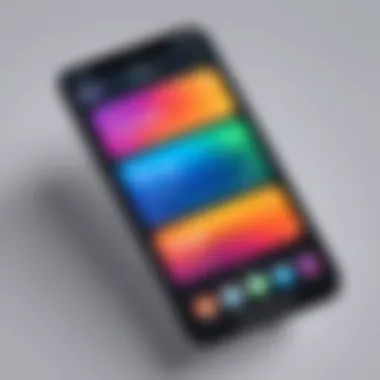
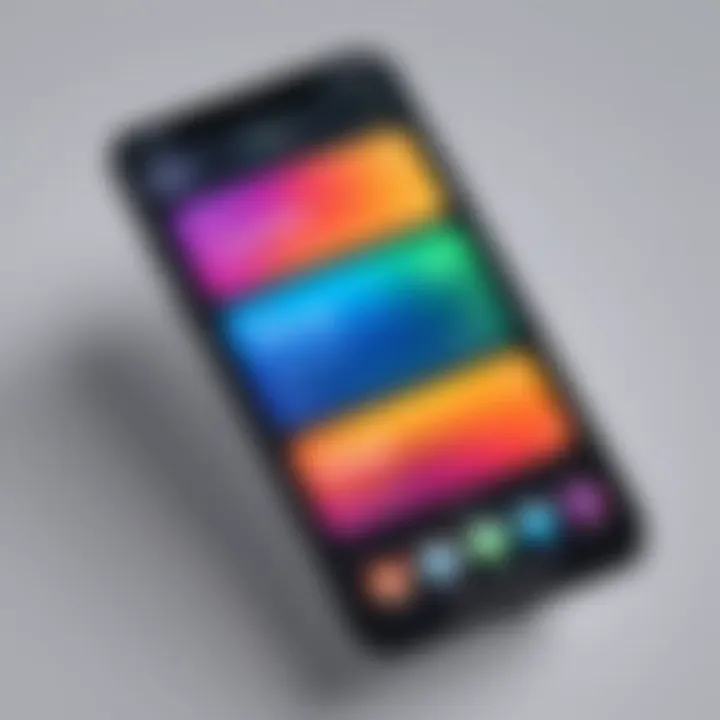
Color Coding and Theming for Organization
Integrating color coding and theming into your to-do list extends beyond aesthetics; it enhances functionality and improves task management. By assigning different colors to various categories or urgency levels, you can quickly identify what needs your attention most.
Benefits of Color Coding:
- Improved Focus: Rapid identification of tasks helps direct your focus where it's needed most.
- Enhanced Organization: Each color theme can represent different areas of responsibility, such as personal, work, or urgent tasks.
- Mood Enhancement: A visually appealing color scheme can motivate users to engage with their lists consistently.
You can implement color coding by customizing your widget settings applicable to several apps. For instance, apps like Todoist and Microsoft To Do allow you to designate task colors and themes reflecting your organization needs.
Overall, indulging in these customization options can transform your iPhone into a highly personalized productivity tool. As you refine your approach, remember that your ultimate goal is effective task management tailored to enhance your unique workflow.
Integrating Siri for Task Entry
Integrating Siri into your task management system enhances the efficiency and accessibility of your iPhone home screen. Siri is more than just a voice assistant; it serves as a vital tool for real-time task entry. The hands-free capability reduces friction in capturing tasks, allowing users to add items quickly without diverting their attention from ongoing activities.
By utilizing Siri, users can take advantage of convenience and speed. This is particularly beneficial for those with busy schedules or for anyone who frequently juggles multiple priorities. Instead of stopping to manually input tasks, users can simply articulate their needs. This may improve their focus on immediate responsibilities, making productivity feel less cumbersome.
Considerations for integrating Siri must include some initial setup and familiarity with commands. Understanding these elements can maximize the benefits of voice command technology.
Voice Command Setup
Setting up voice commands for Siri is a straightforward process that enables seamless task entry. To begin, ensure Siri is enabled on your iPhone by navigating to Settings > Siri & Search. Turn on options like Listen for "Hey Siri" and Press Side Button for Siri.
After activation, it is crucial to test the accuracy of voice recognition. Here are steps to follow:
- Go to Settings > Siri & Search.
- Enable Voice Feedback to make sure Siri provides auditory responses.
- Test various commands related to task entry, such as "Add a task to my list" or "Remind me to check emails at 3 PM."
This setup ensures that the device recognizes your voice commands promptly and accurately, establishing an efficient system for task management.
Utilizing Siri for Voice-Activated Reminders
Once Siri is set up, using it for voice-activated reminders can dramatically streamline how tasks are added and managed. Siri allows users to create reminders instantly without lifting a finger, enhancing productivity on the go. Here are some practical ways to leverage this feature:
- Direct Commands: Simply state, "Hey Siri, remind me to call John at 5 PM." This instruction will create a reminder that appears in your task list right away.
- Contextual Reminders: Users can also create contextual reminders, for example, "Hey Siri, remind me to buy groceries when I get home."
- Integration with Existing Apps: Similarly, you can instruct Siri to add items to Apple Reminders, Todoist, or other supported apps. For instance, saying, "Add 'write the report' to Todoist" ensures the task is logged in the appropriate application.
By harnessing these voice-activated features, users can remain engaged with their activities while ensuring they remain organized.
"Effective task management is about minimizing interruption and maximizing focus. Siri offers a tool that aligns well with these objectives."
As voice command technologies like Siri evolve, they continue to serve as essential components in optimizing task management on mobile devices. This integration not only facilitates better organization but also empowers users to enhance their overall productivity through simple voice interactions.
Best Practices for Managing To-Do Lists
Managing tasks on your iPhone requires more than just creating lists. It involves adopting best practices that can help in prioritizing, organizing, and updating those tasks effectively. These practices serve to maximize productivity while minimizing the potential for overwhelm.
Prioritizing Tasks Effectively
Effective prioritization is at the core of successful task management. When you prioritize, you are determining which tasks need urgent attention and which can wait. One approach to prioritization is the Eisenhower Matrix, which categorizes tasks based on urgency and importance. This can be particularly useful on a digital platform like iPhone, where apps can allow easy tagging or color coding.
- Urgent and Important: Tasks that must be done right away. Examples might include deadlines or important meetings.
- Important but Not Urgent: These tasks are essential for long-term goals. Allocate time for them to prevent last-minute pressure.
- Urgent but Not Important: Delegate these tasks if possible. They may distract from focusing on what is truly important.
- Neither Urgent nor Important: Consider eliminating or postponing these tasks.
Using your iPhone expertly can aid in this process. For instance, setting reminders for urgent tasks through the Apple Reminders app can keep you on track. Alternatively, apps such as Todoist and Microsoft To Do allow you to categorize and prioritize your tasks clearly within the list.
"Prioritization transforms the chaos of tasks into a structured approach."
Regular Review and Update Techniques
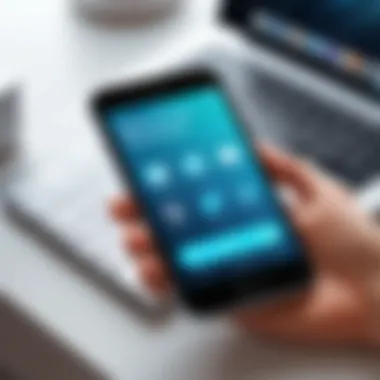
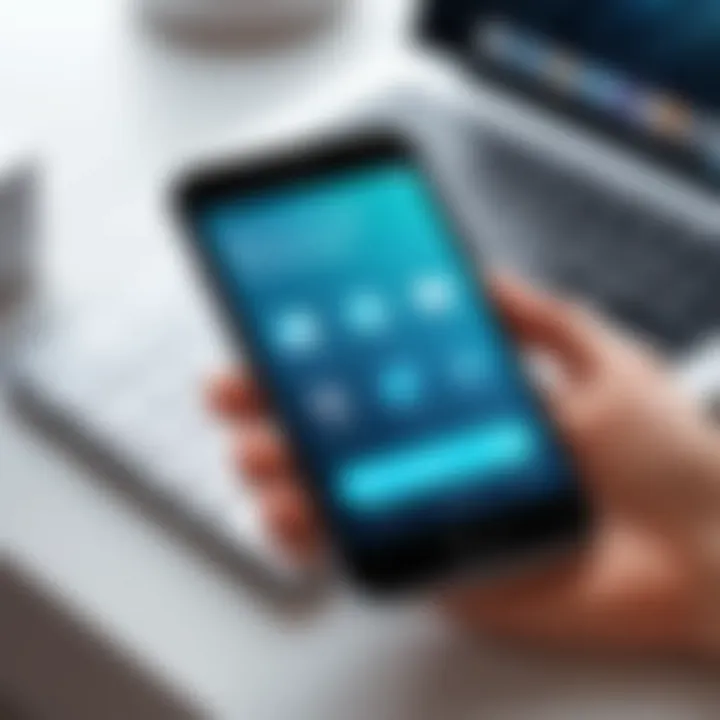
Regularly reviewing and updating your to-do lists is another vital practice. This not only ensures you stay on top of your tasks but also aids in tracking your progress. It is advisable to set aside time each week for a review session. During this time, assess which tasks you completed, what needs to be moved to the next week, and what can be considered for removal.
- Daily Check-ins: Take a few minutes each day to check your list and adjust as necessary.
- Weekly Review: A more in-depth look at your tasks at the end of the week. Eliminate tasks that are no longer relevant.
- Flexible Updating: Don't hesitate to modify due dates or change priorities as responsibilities evolve.
By employing these strategies, your iPhone home screen can transform into a dynamic task management tool that reflects your current needs. Consistency in updating and reviewing not only keeps you organized but also helps maintain a smooth flow of your daily schedule.
Overcoming Common Challenges
Effectively managing tasks requires overcoming various challenges that may arise during the utilization of to-do lists on iPhone. By identifying and addressing these challenges, users can enhance their productivity and maintain focus amidst distractions and interruptions. It is essential to understand these obstacles because they directly impact how users interact with their task management systems. Recognizing common pitfalls makes it possible to develop strategies tailored to personal work habits, ultimately boosting efficiency and achieving work-life harmony.
Dealing with Distractions
Distractions are an ever-present hurdle in today’s fast-paced environment. With notifications buzzing, emails flooding in, and calls demanding attention, it is easy to veer off course. To mitigate distractions effectively, consider minimizing interruptions on your iPhone. Start by setting your device to Do Not Disturb mode during concentrated work periods. This feature silences notifications and alerts, allowing for uninterrupted focus on tasks at hand.
Additionally, curating specific widgets on your home screen that display only your most critical tasks can streamline attention. Designate a certain area for these widgets, making the to-do lists easily accessible without navigating away from primary applications. This reduces the likelihood of distraction from less relevant notifications. One tactic is to group tasks by project or urgency. This method keeps the focus sharp and helps filter out unnecessary urgency.
Moreover, creating a dedicated space for work-related apps, separate from entertainment or social media applications, can help draw a boundary between productive and leisure activities. You may also utilize time-blocking methods, allowing segments of time solely for tackling these tasks, free from distractions. Taking these measures results in a more organized approach, freeing mental space to focus on completing meaningful work.
Maintaining Consistency in Task Tracking
Consistency in tracking tasks is pivotal for anyone aiming to sustain productivity. Developing a daily routine for checking and updating your to-do list fosters accountability and ensures tasks are not overlooked. Users can set specific times during the day for this activity, such as early mornings or late afternoons, to establish a habit.
Utilizing reminders integrated with your chosen task management app, like Apple Reminders or Microsoft To Do, can prompt regular updates. These reminders can be customized based on user preferences, ensuring they align well with individual schedules and routines.
Additionally, regularly reviewing completed tasks can provide insight into personal progress and areas requiring attention. This practice reinforces accomplishments, encouraging momentum and forward motion. One might consider adopting a weekly reflection where achievements are noted and upcoming tasks are outlined.
Maintaining a consistent tracking method not only boosts personal accountability but also enhances the ability to judge one’s own workload realistically. It is essential to recognize that adapting to a new routine may take time, but persistence is key. Over time, these practices can result in a noticeable improvement in how tasks are managed on your iPhone.
The Impact of Task Management on Life Balance
Effective task management plays a significant role in achieving a balance in life. In our fast-paced world, where responsibilities compet with personal time, properly managing tasks can lead to a more structured and fulfilling life. Understanding how to manage tasks efficiently can help reduce stress and create a more harmonious routine. This section discusses how organizing tasks can positively impact personal life.
Enhancing Personal Accountability
One of the primary benefits of managing tasks well is the enhancement of personal accountability. A well-structured to-do list is more than just a collection of notes; it is a tool that encourages individuals to take ownership of their tasks. By listing tasks and deadlines, one internalizes the responsibility to complete those tasks. This practice can foster a sense of achievement and motivate individuals to progress towards their goals. Regularly checking off completed tasks not only provides a clear visual of one’s progress but also reinforces accountability. Individuals begin to hold themselves to higher standards when they see a commitment to their lists.
Creating Time for Leisure and Reflection
In addition to accountability, effective task management creates space for leisure and reflection. When tasks are organized and prioritized, it becomes easier to allocate specific times for personal activities. This could include hobbies, exercise, or simply downtime. Achieving a balance between work and relaxation is crucial for mental health. For instance, when one uses a to-do application to set work boundaries, leisure does not become an afterthought.
Moreover, dedicated time for reflection can lead to better decision making. By setting aside moments to consider what tasks went well and what could be improved, one can better adjust their approach to future tasks. This reflective practice enhances self-awareness, essential for ongoing personal development.
"Good task management empowers individuals, leading to enhanced well-being and greater life satisfaction."
Future Trends in Task Management Technologies
The landscape of task management is continuously evolving, adapting to the needs and behaviors of users. Understanding future trends in task management technologies is crucial for individuals who rely on their iPhone home screens to enhance productivity. These innovations are designed to streamline processes, increase efficiency, and offer tailored experiences that align with a user’s specific requirements. As technology advances, adapting to these trends will empower users to maintain effective task management and ensure nothing slips through the cracks.
Emerging Features in App Development
A noticeable trend in app development is the incorporation of integrated features that enhance user experience. Developers are focusing on simplifying interfaces while increasing functionality. For instance, many task management apps now support features such as
- Seamless Synchronization: Tasks can sync across devices, allowing users to access their lists anytime, anywhere.
- Customizable Notifications: Users can set reminders that suit their personal schedules, minimizing disruptions while ensuring important tasks are not forgotten.
- Collaboration Tools: Built-in sharing options enable teamwork on shared tasks, transforming how groups approach project management.
These improvements encourage users to manage their tasks more efficiently, leading to greater overall satisfaction and output.
AI and Machine Learning in Task Organization
Artificial Intelligence (AI) and machine learning are set to revolutionize how tasks are organized and prioritized. By analyzing user behavior, these technologies can automatically adjust task lists and suggest re-prioritization based on deadlines or urgency. This provides several advantages:
- Smart Task Suggestions: These systems can propose tasks to add based on past behaviors and deadlines.
- Predictive Algorithms: By monitoring patterns, apps can predict tasks that may need attention soon, reducing the risk of overlooking important responsibilities.
- Enhanced Personalization: AI can tailor user experiences, making suggestions that fit individual needs and habits, which increases the relevance of task management systems.
As AI and machine learning continue to advance, their integration in task management applications will likely become more pervasive, making digital task organization not only simpler but also smarter.





